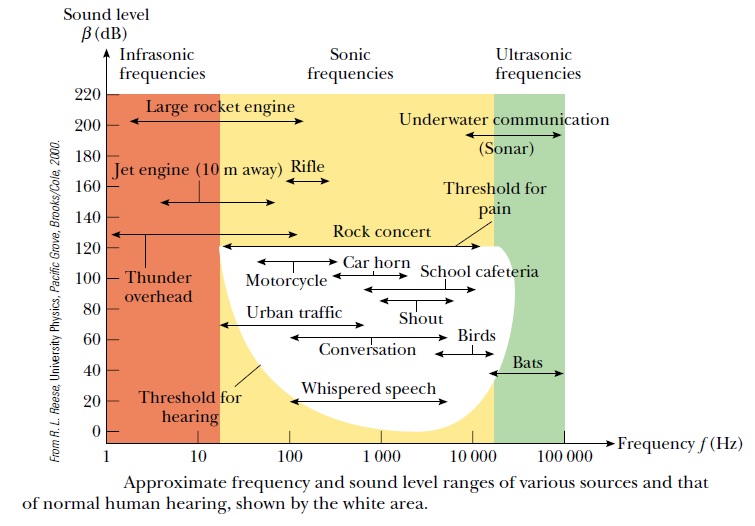Sound Intensity
Key Questions
-
Decibels (dB) are a measurement of noise levels; the higher the number of decibels, the louder the noise. By comparison, a mosquito's buzz is about 40 decibels, while a jet take-off is about 150 decibels.
This is a scale of various sounds from very quiet (0dB) to loud (140dB). Now, of course, 140dB, isn't the loudest a sound can get, in fact, the Tunguska Meteor reached decibel levels of a staggering 300 - 315dB! The effects of prolonged exposure to loud sounds, such as a rocket launch or jet take-off can include eardrum rupture or temporary deafness,
-
The main difference is that, normally, you can physically measure the intensity of sound and you get a value (fixed and the same for everybody). Loudness instead is a quantity that represents the psychological response to a sound (such as pain, discomfort, absence) and depends on both intensity and frequency (and actually on the person that is measuring it)!
Without going into many details about the intensity measurement (you can find them in every Physics book) you have intensity level measured in decibels, dB, which is a Physical measurement while the Psychological sensation of intensity level (loudness) varies adapting itself to the intensity level in dB; for humans (roughly) you have:

In this graph you can see the white area: the lower boundary corresponds to the minimum of intensity (in dB) that you can hear and you see that it varies and depends on frequency (Threshold of hearing) as the upper one (threshold of Pain) that, however, is more horizontal.
So you cannot really say: “…my threshold of hearing is x dB”, because it varies according to the frequency and to the person good hearing (probably the threshold for a piano tuner and the one of the singer of the heavy metal band Motorhead will vary…for obvious reasons!).hope it helps